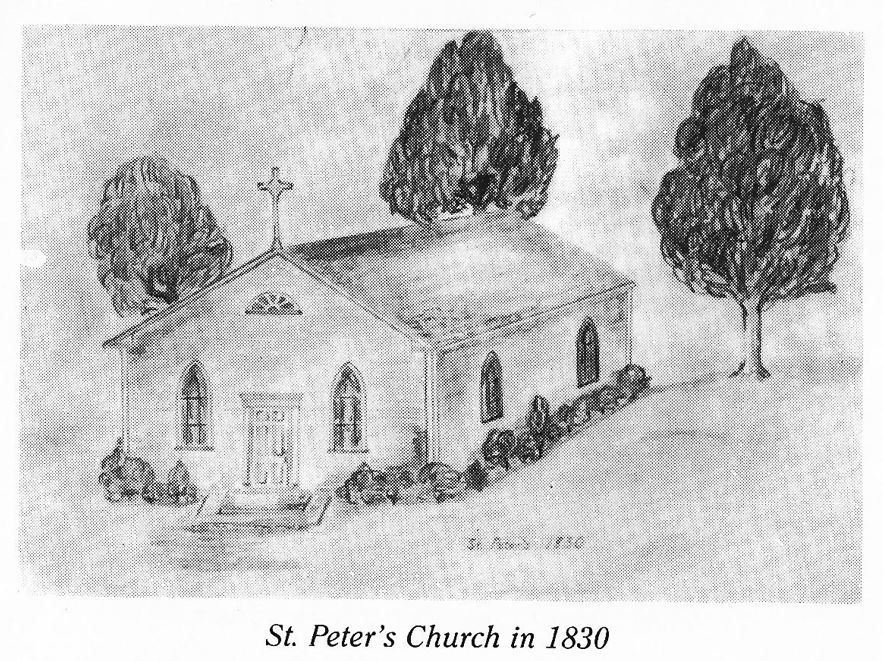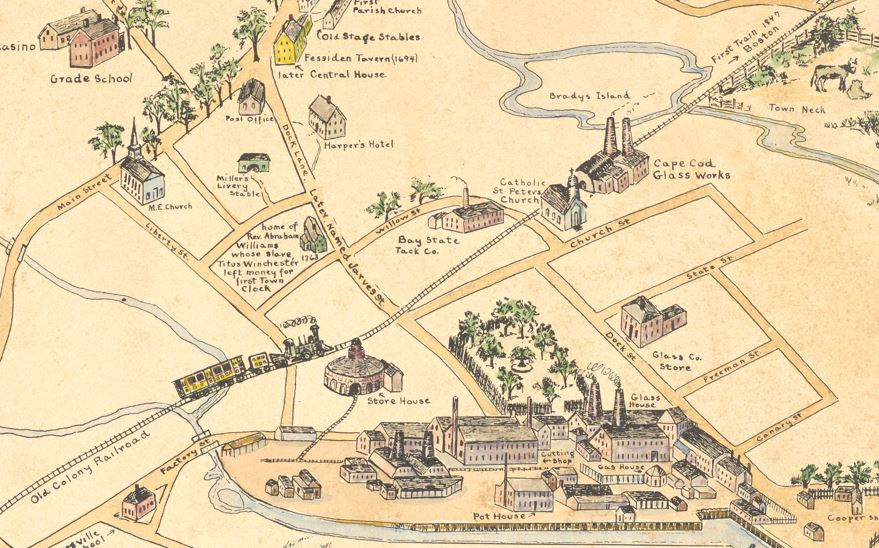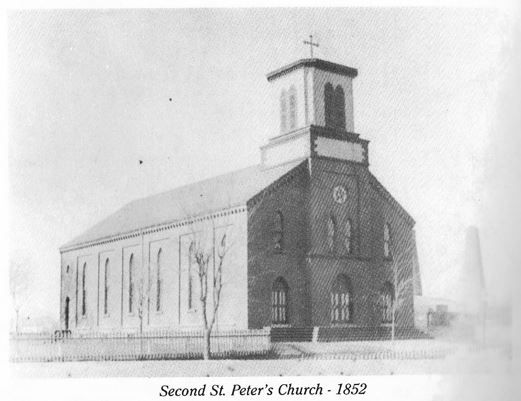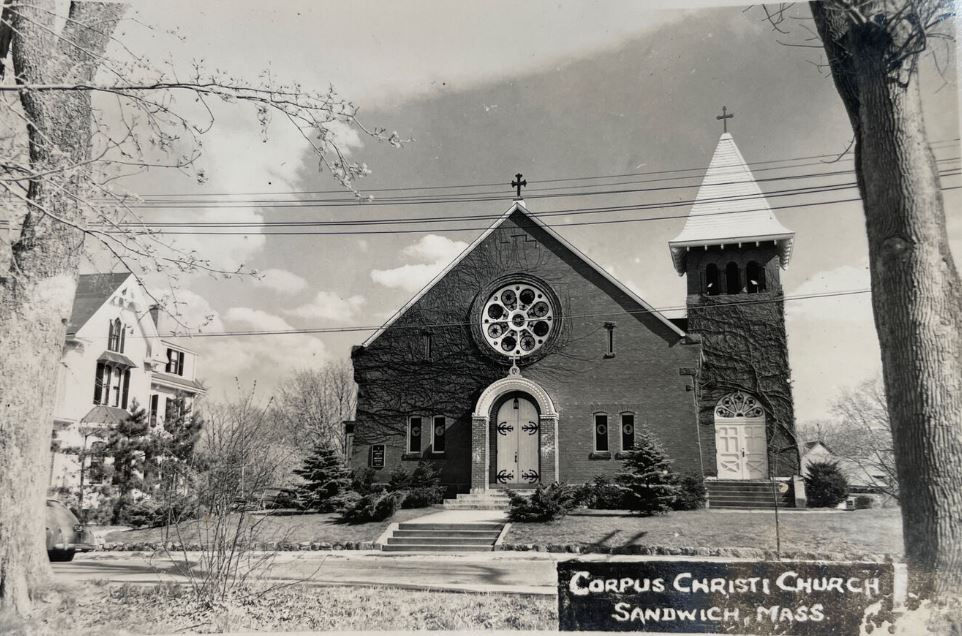First Catholic Church on Cape Cod
- Kaethe Maguire
- Nov 19, 2021
- 4 min read
"The Town That Glass Built" is surely an appropriate tag for Sandwich. But imagine the culture shock to sleepy Yankee Sandwich when in 1825 it was invaded by the East Cambridge Glass Works of Deming Jarves, followed by people from Europe who became its artisans.
Many of these new-comers not only did not speak English as a first language since they were originally from Ireland and France, but also came with a different religion.
At first approximately 20 families arrived, predominately Irish.
Now placing the shoe on the other foot, imagine the foreignness of rural Sandwich to these glass workers, where they did not even have a church to call their own in order to form a community.
Catholics believe they should be buried in what is called consecrated ground; in other words, blessed ground. There was not a Catholic burying ground in Sandwich until St. Peter’s was established in 1865. The Old Town Burying Ground began in 1663, yet there are only seven Catholics buried there.
Deming Jarves later established a non-sectarian burial ground called Mount Hope, on land called Sand Hill. Lots were sold for six dollars each. Mount Hope Cemetery is located on The Old King’s Highway (Route 6A), west of Chipman Road.
In 1825 the Industrial Revolution was not yet in full swing and certainly not on Cape Cod. For the most part, industry was dependent on natural forms of power, like waterpower. But making glass took wood to burn primarily for power and that was still in abundance on Cape Cod.
In 1820 the population of Sandwich, which then included what is now Bourne--so a huge geographic area--was 2,484 people. By 1830, once the Glass Works were well up and running, the population jumped to 3,361. By 1860, still before the 1884 breakaway that created Bourne, the Sandwich population was 4,479. The numbers speak for themselves.
The number of Catholics slowly increased as more came from the Boston area and from Europe to work in Sandwich. By 1827-28, a petition was sent to the Rev. Benedict J. Fenwick of the Diocese of Boston asking him to provide a priest and a church. Bishop Fenwick came to Sandwich for a visit.
The visit worked, and Fr. William Tyler became the pastor. He lived with John Doyle and held Mass in his parlor. By 1830 there were 70 parishioners.
With Mr. Doyle as their leader, they purchased a small plot of land for $125 in an area later called Depot Square, on Jarves Street. The framing for this structure was shipped from Boston and the new structure was dedicated to St. Peter on September 19, 1830 by Bishop Fenwick. This would be the first Catholic Church on Cape Cod, and in 1865 St. Peter’s Cemetery would be the first Catholic cemetery on the Cape.


Fr. Peter Connolly was appointed to serve Sandwich, but he also served Wareham, New Bedford, Rhode Island, Canton and elsewhere! Catholic priests were rare and those that were here were forced to travel all the time.
The number of Catholics in Sandwich varied with the economy and the amount of work provided by the Boston and Sandwich Glass Works.
However, the Irish Famine of the 1840s and the railroad arriving in Sandwich in 1848 produced a growth spurt. The Glass Works helped to support this growing population by building still more homes for the workers, which could be purchased on the installment plan.
The need for a much larger church was now obvious. Fr. Moran, who had served as a missionary to Native Americans in Maine, led the effort. The new construction began in 1852, and the difference between the first small, flimsy wooden structure and the new St. Peter’s, built to last for all time, was striking.

The original wooden church was sold and moved from Depot Square to a site on Jarves Street to be used as a grocery store. In 1972 the building was joined to stores adjacent to it. This structure remains at 23 Jarves Street, and there is a plaque on the building which we call the MacDonald Arnold Building.
The church built to last for all time was almost immediately hit by fierce storms. The first destructive one came in 1857. The 160-foot steeple with bell, clock, and ruby glass ball was destroyed. Wisely, a smaller bell tower replaced the tall structure.
As perhaps a harbinger of things to come, a fire in 1887 badly damaged the interior of the brick St. Peter’s leaving the walls seriously weakened. Fr. Clinton played a big part in having these repairs done to restore the church.
With the eventual decline of the Boston and Sandwich Glass Company came massive unemployment in Sandwich. However, the Keith Car Works in then Sagamore, part of Bourne, was able to employ a small number of the former Sandwich glass workers. But poverty prevailed for many of the Sandwich families.
In 1898, St. Peter’s was again badly damaged by a fierce storm known as the Portland Gale. The building was declared unsafe and shut in 1899. Many stepped forward with support and money to help build a new church. Sandwich resident Thomas Kelleher was awarded the construction contract.
Finally, the corner stone of of the Corpus Christi Church was laid in 1900. Old stained-glass windows and bricks from the inner walls of the St. Peter’s Church were used in the construction.

Kaethe Maguire is a member of the Friends of the Sandwich Town Archives, a dedicated, all-volunteer, 501(c)(3) nonprofit committed to supporting and promoting the archives’ collections and the rich, diverse history of the town of Sandwich.





Comments